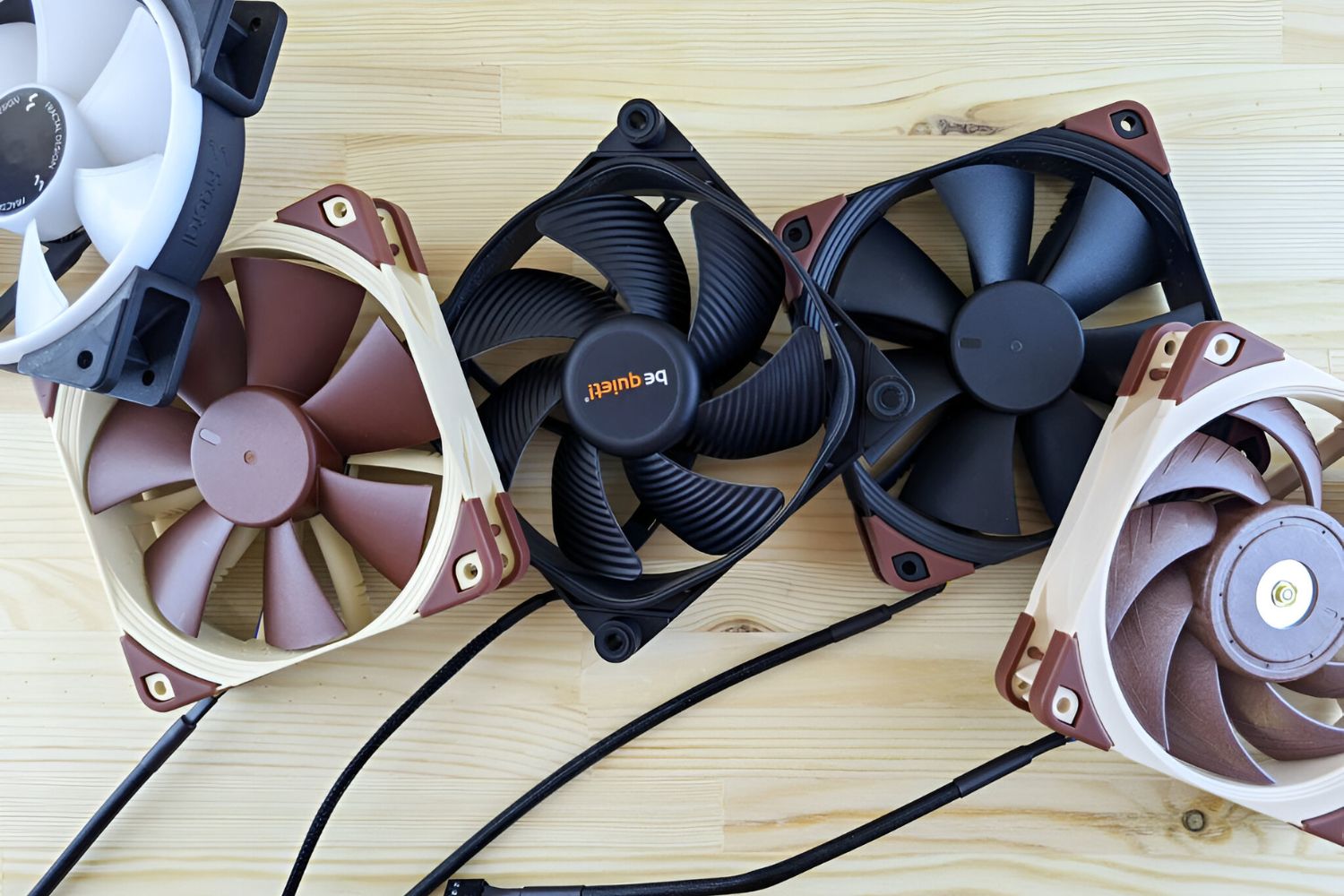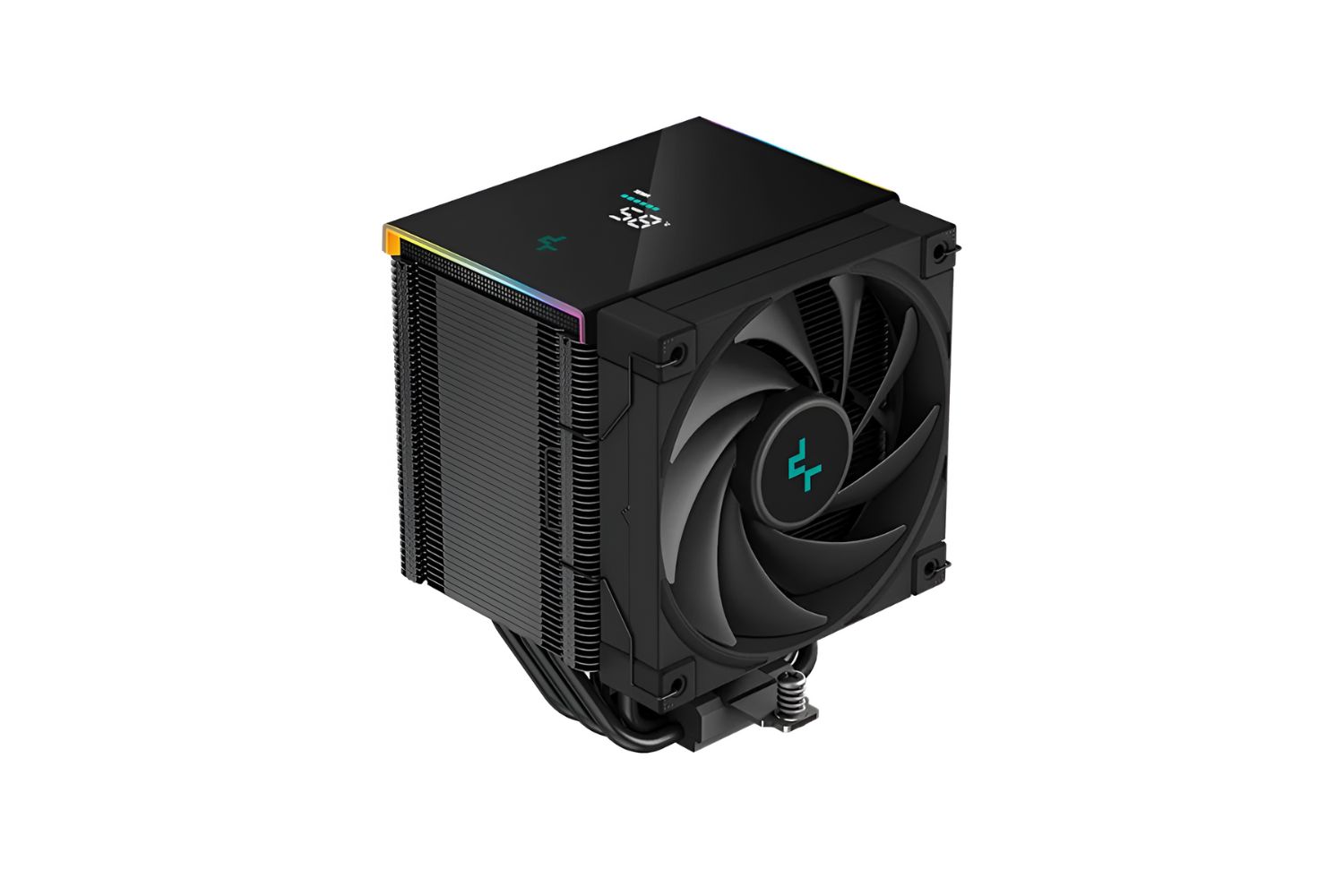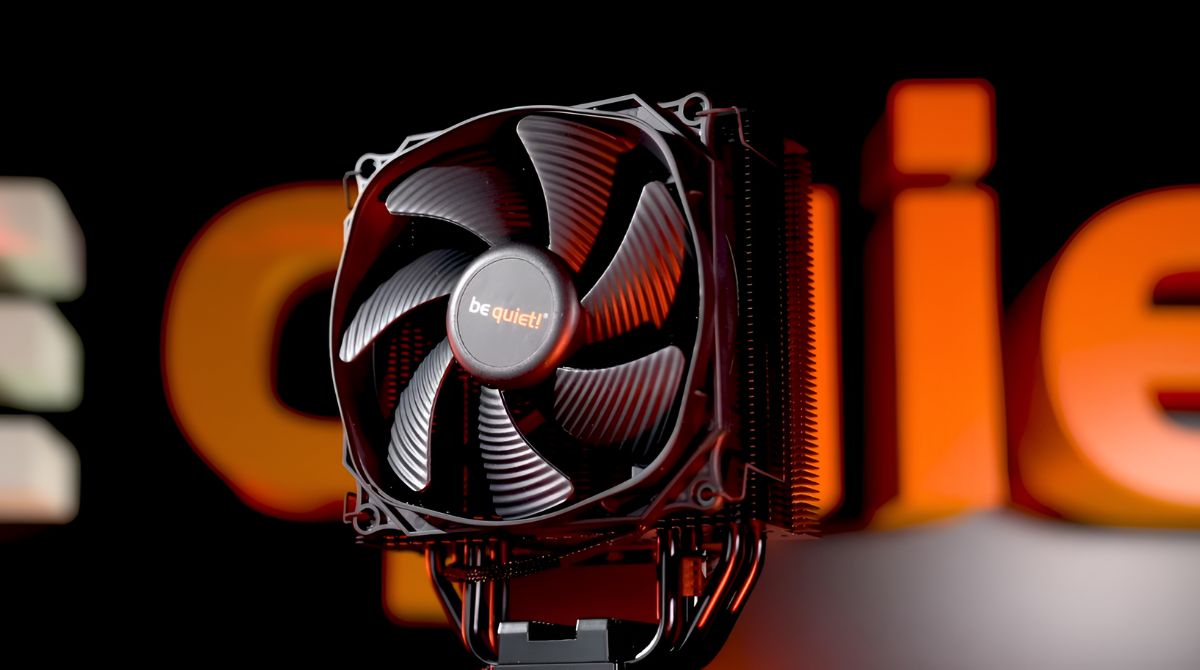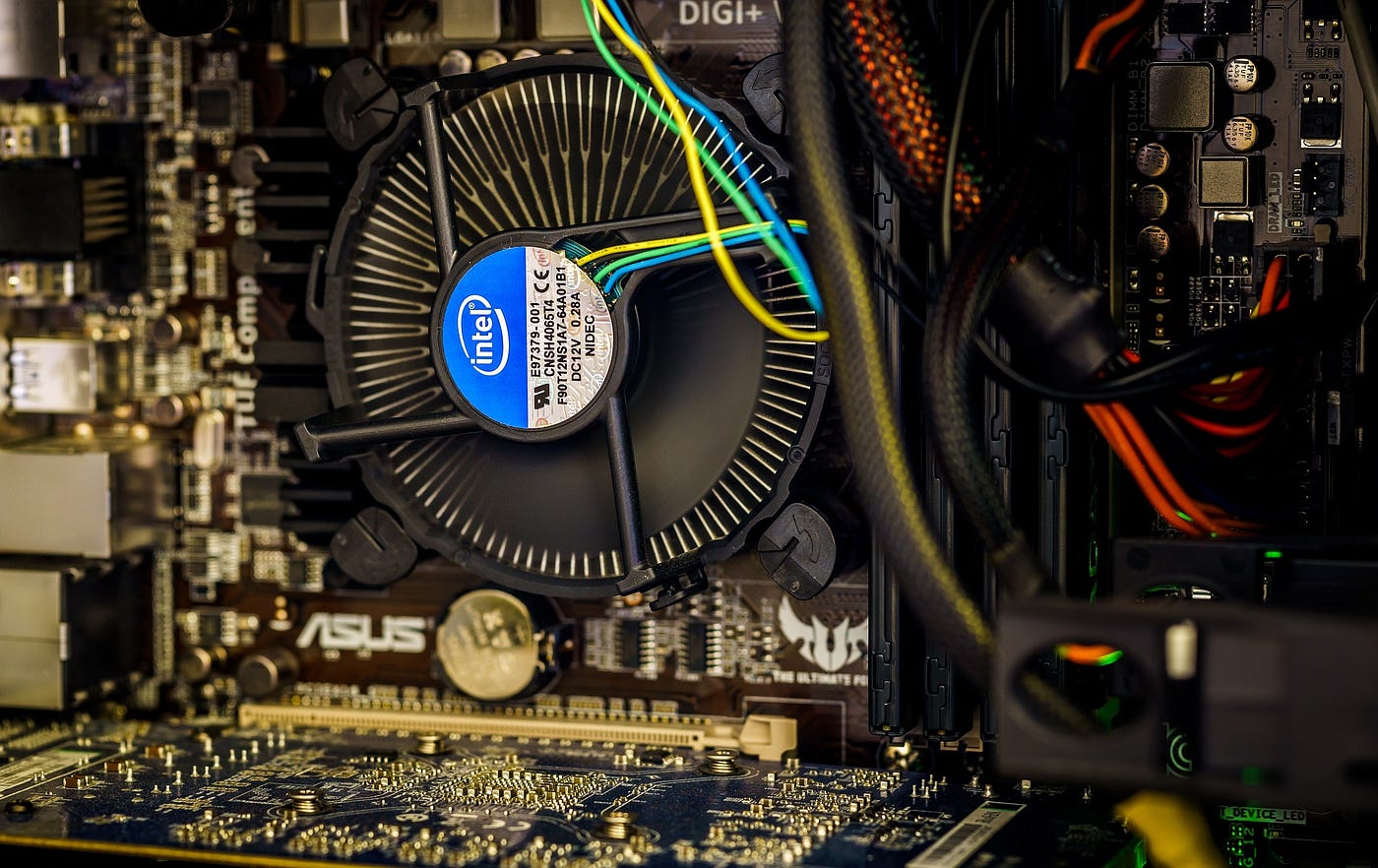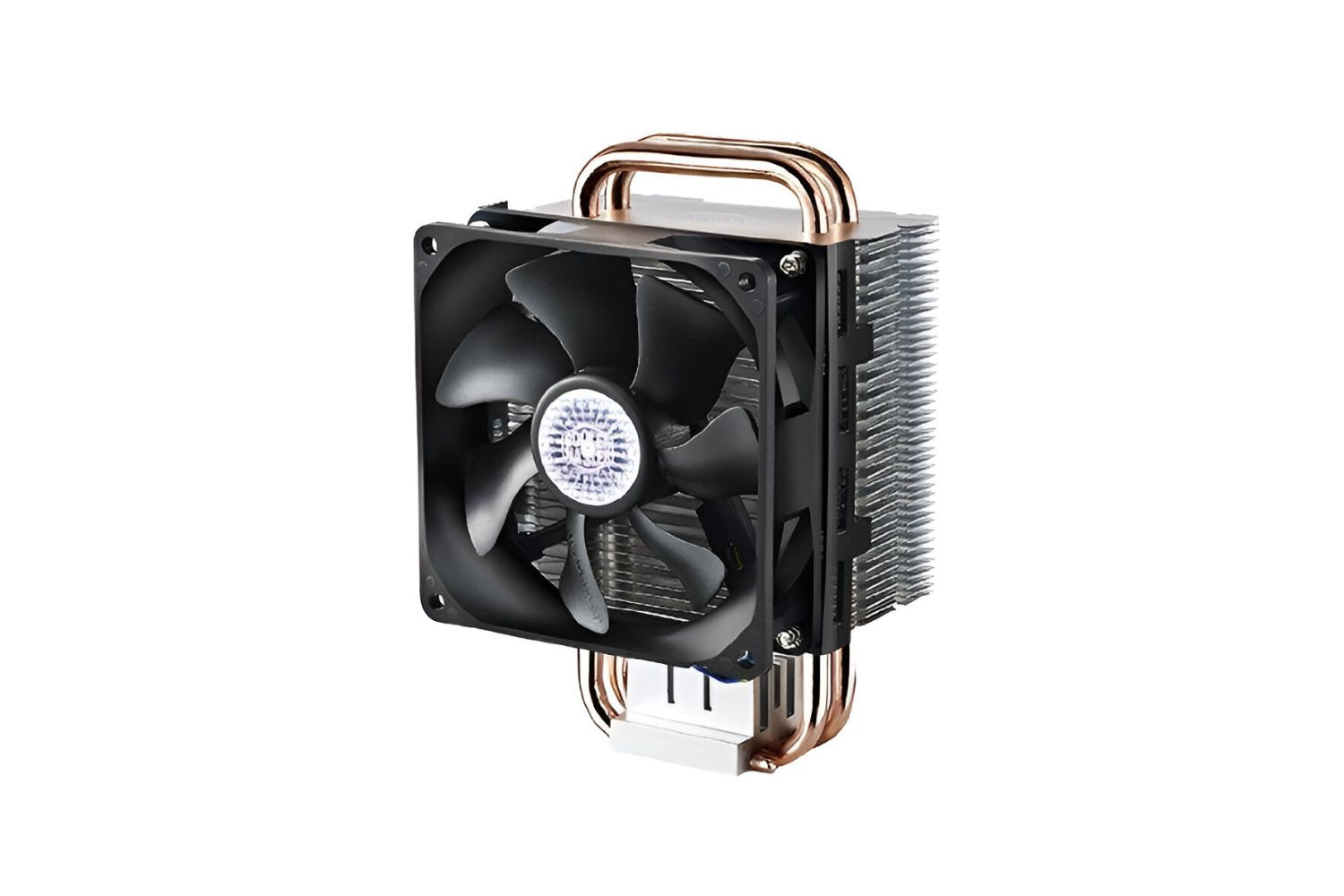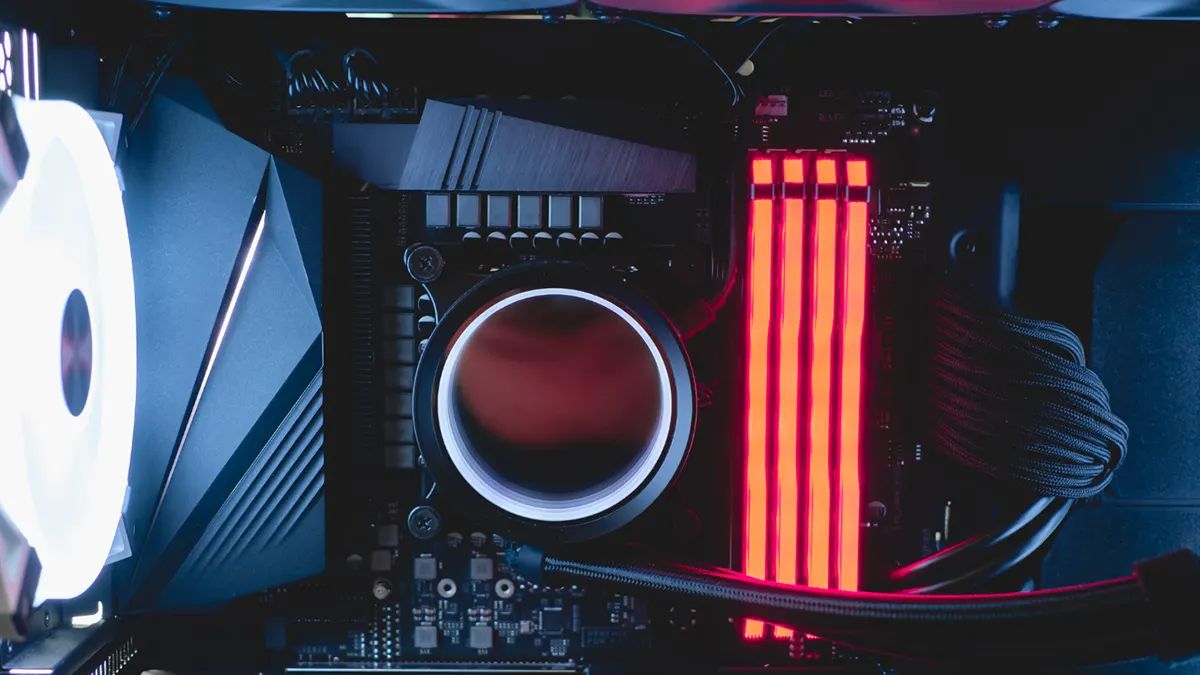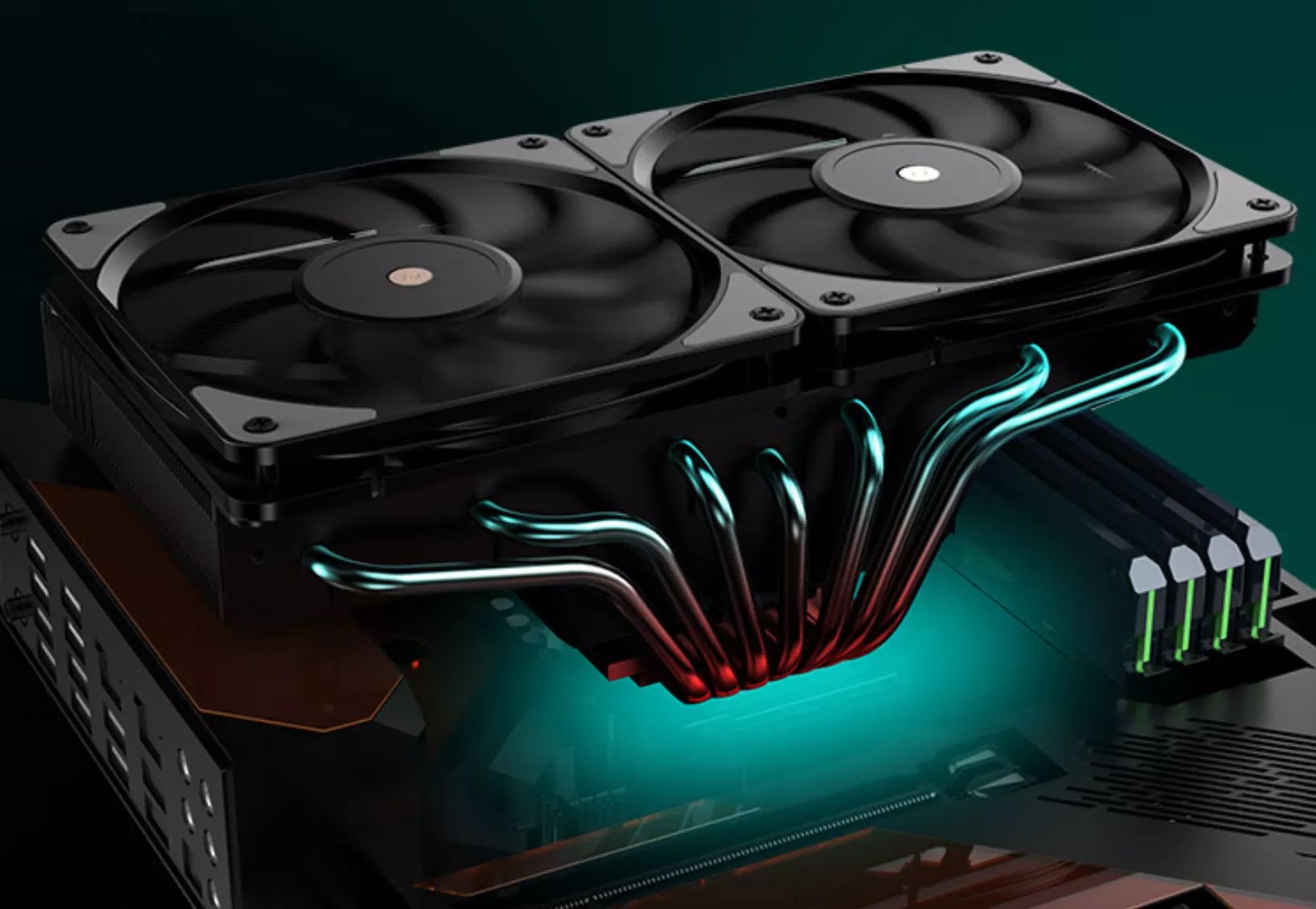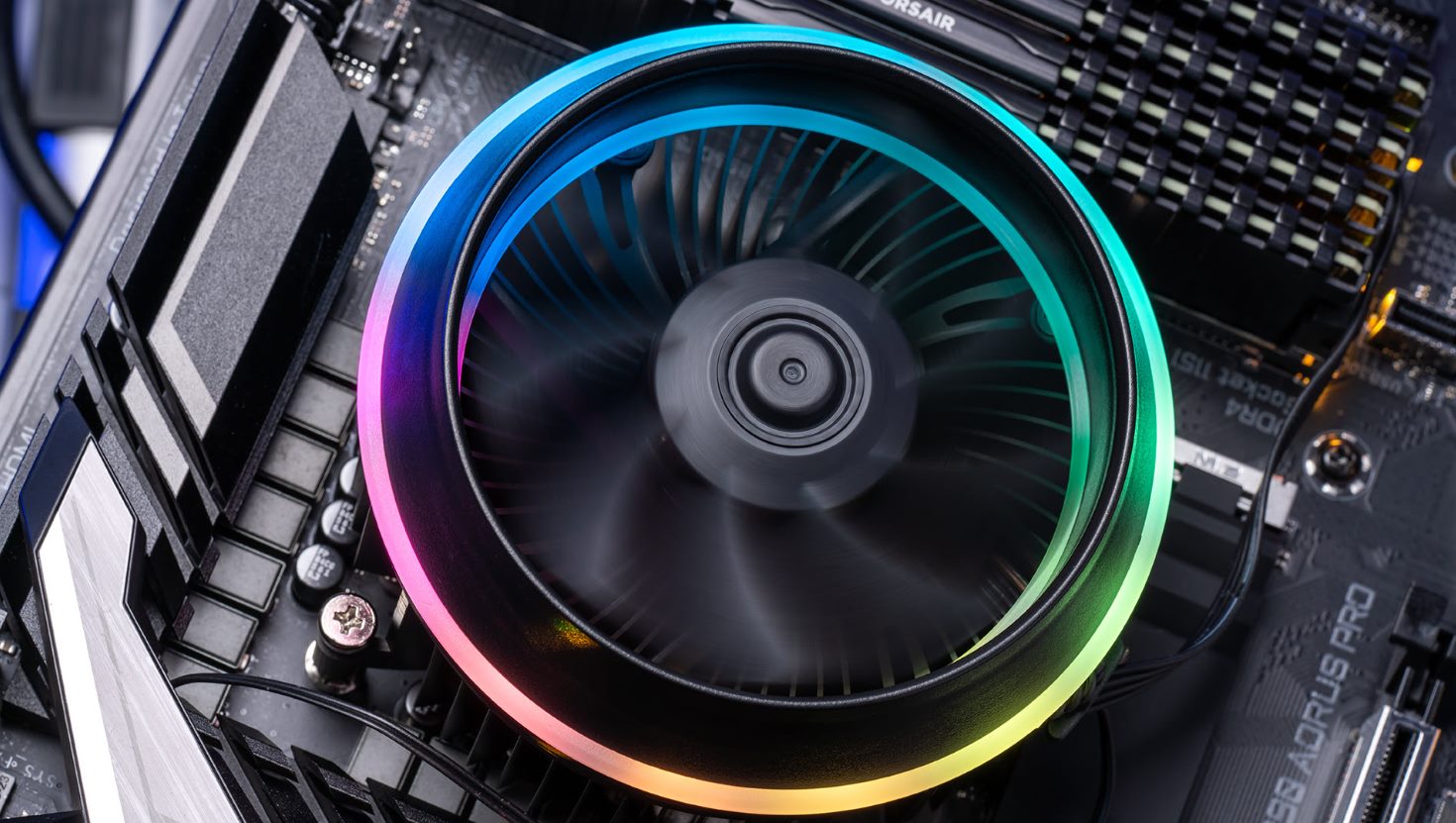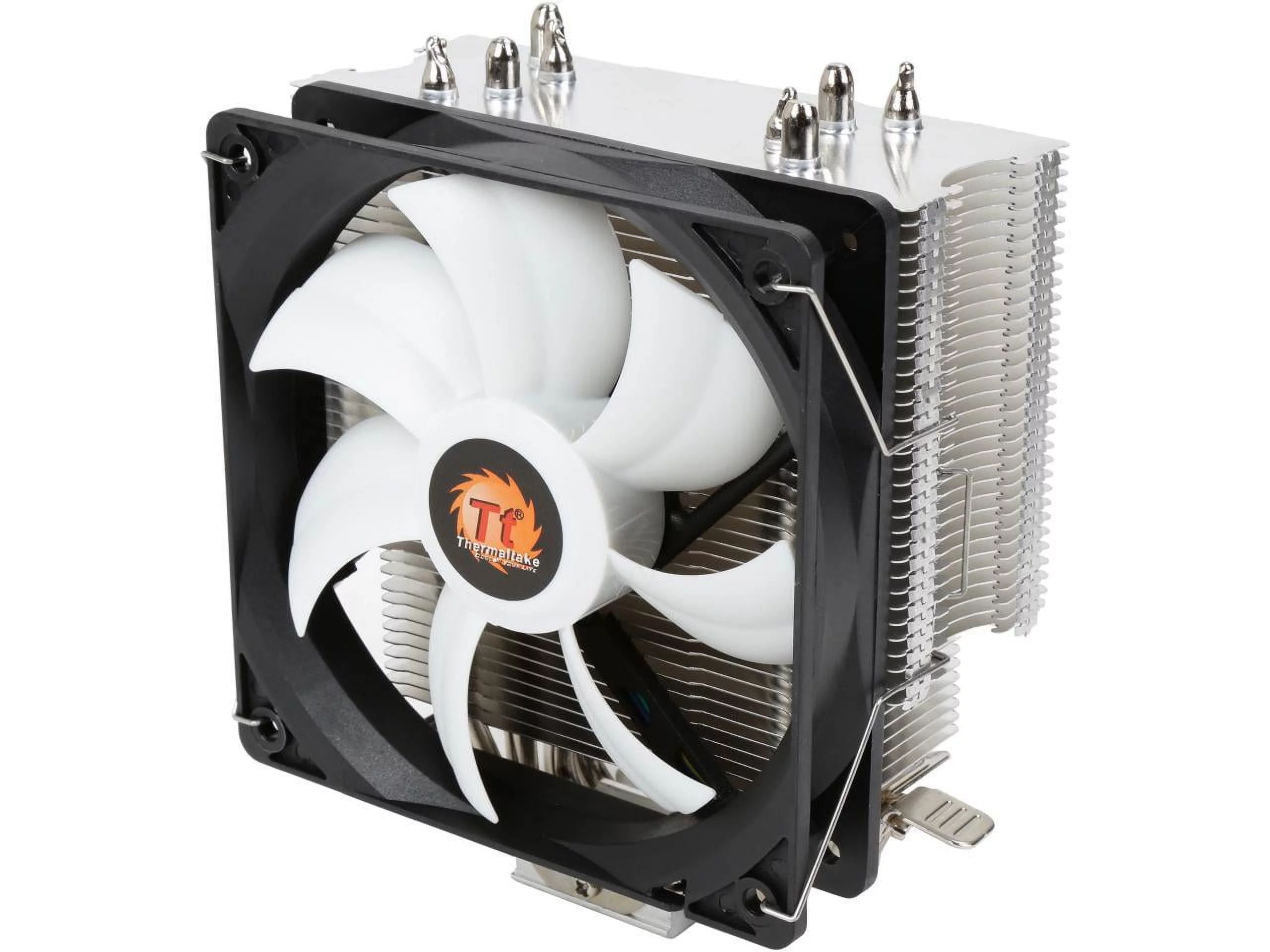Introduction
A CPU cooler is an essential component in any computer system, responsible for keeping the processor cool and preventing it from overheating. It consists of various parts, including a heatsink, heat pipes, and a fan. However, one crucial element that often goes unnoticed but plays a vital role in the cooling process is the CPU cooler bearing.
A CPU cooler bearing is a mechanical component that allows the fan to rotate smoothly and efficiently. It acts as a support system for the fan blades, enabling them to spin at high speeds while reducing friction and ensuring stability. The type of bearing used in a CPU cooler affects its performance, noise level, and lifespan.
In this article, we will delve into the different types of CPU cooler bearings and discuss their features, advantages, and disadvantages. By understanding the various options available, you can make an informed decision when choosing a CPU cooler for your system.
So, let’s dive in and explore the fascinating world of CPU cooler bearings!
What is a CPU Cooler Bearing?
A CPU cooler bearing is a mechanical component that supports the rotation of the fan blades in a CPU cooler. It is designed to reduce friction and allow smooth, efficient movement, thereby ensuring effective cooling of the processor. The quality of the bearing directly impacts the performance, noise level, and lifespan of the CPU cooler.
The bearing works by providing a stable and controlled axis for the fan blades to rotate on. It helps distribute lubrication evenly and minimizes wear and tear caused by friction. Without a proper bearing, the fan blades would not be able to rotate freely, resulting in decreased airflow and inefficient cooling.
The choice of bearing in a CPU cooler depends on factors such as cost, noise level, and performance. Various types of bearings are available, each with its own set of advantages and limitations. Let’s explore the most common types of CPU cooler bearings:
- Sleeve Bearings
- Ball Bearings
- Fluid Dynamic Bearings
- Magnetic Levitation Bearings
Understanding the characteristics of each type will help you determine which one best suits your needs. Let’s take a closer look at each type of CPU cooler bearing and its specific features.
Types of CPU Cooler Bearings
There are several types of bearings commonly used in CPU coolers, each offering unique benefits and considerations. Let’s explore the most common types:
- Sleeve Bearings: Sleeve bearings, also known as plain or sleeve bushings, are the most basic type of bearing. They consist of a sleeve made of metal or plastic with a lubricating oil layer inside. Sleeve bearings are cost-effective and provide reliable performance. However, they tend to have a shorter lifespan compared to other types and may generate more noise at higher speeds.
- Ball Bearings: Ball bearings are widely used in CPU coolers due to their excellent durability and smooth operation. These bearings incorporate a set of small metal balls between the inner and outer raceways, reducing friction and ensuring efficient rotation. Ball bearings offer longer lifespan, lower noise levels, and high temperature tolerance. However, they can be slightly more expensive compared to sleeve bearings.
- Fluid Dynamic Bearings: Fluid dynamic bearings (FDB) are designed to reduce friction and noise while providing reliable and long-lasting performance. FDBs use a layer of oil or fluid that creates a thin film between the bearing surfaces, creating a smooth rotation. This type of bearing offers excellent cooling efficiency and minimal noise levels. However, FDB CPU coolers are generally more expensive.
- Magnetic Levitation Bearings: Magnetic levitation bearings utilize magnetic fields to suspend the fan rotor, reducing friction and noise. This type of bearing offers exceptional performance, ultra-quiet operation, and extended lifespan. Magnetic levitation bearings are often found in high-end CPU coolers and are associated with a higher price point.
The choice of CPU cooler bearing type depends on specific requirements, such as budget, noise tolerance, performance demands, and overall system needs. It’s crucial to consider these factors when selecting a CPU cooler for your system.
Now that you have a clear understanding of the different types of CPU cooler bearings, let’s delve deeper into the advantages and limitations of each type in the next sections.
Sleeve Bearings
Sleeve bearings, also known as plain bearings or sleeve bushings, are a common type of bearing used in CPU coolers. They consist of a cylindrical sleeve made of metal or plastic, with a small clearance between the sleeve and the rotating shaft of the fan. Inside the sleeve, there is a layer of lubricating oil that helps reduce friction and facilitate smooth rotation.
One of the main advantages of sleeve bearings is their cost-effectiveness. They are relatively inexpensive to produce, making them a popular choice in budget-friendly CPU coolers. Additionally, sleeve bearings offer reliable performance for moderate cooling needs.
However, sleeve bearings do have some limitations. One drawback is their relatively shorter lifespan compared to other bearing types. Over time, the lubricating oil may dry up or degrade, leading to increased friction and wear on the bearing surfaces. This can result in a decrease in performance and an increase in noise levels.
Another consideration with sleeve bearings is noise. At higher speeds, sleeve bearings can generate more noise compared to other bearing types. The friction between the rotating shaft and the sleeve can create a humming or buzzing sound, which may be noticeable to some users.
Despite these limitations, sleeve bearings can still be a suitable choice for low to moderate cooling demands. They are often found in entry-level or budget CPU coolers. If noise levels are not a significant concern and the cooler is adequately maintained, sleeve bearings can provide satisfactory performance and reliability.
It’s important to note that some manufacturers may enhance the design and materials of sleeve bearings to overcome their limitations. These improved sleeve bearings may offer better durability or reduced noise compared to standard sleeve bearings.
In summary, sleeve bearings are a cost-effective option for CPU coolers, providing reliable performance for moderate cooling needs. However, they have a shorter lifespan and may generate more noise at higher speeds. If budget is a priority and noise levels are acceptable, sleeve bearings can be a suitable choice.
Ball Bearings
Ball bearings are a widely used type of bearing in CPU coolers, known for their durability and smooth operation. They consist of a series of small metal balls placed between the inner and outer raceways of the bearing. These balls reduce friction and provide a stable support system for the rotation of the fan blades.
One of the main advantages of ball bearings is their long lifespan. The use of metal balls reduces the wear and tear on the bearing surfaces, resulting in improved durability and reliability. This makes ball bearings a popular choice, especially for CPU coolers that require continuous and efficient cooling.
In addition to their longevity, ball bearings also offer lower noise levels compared to some other bearing types. The design of ball bearings reduces the friction between the different components, minimizing vibrations and resulting in quieter operation.
Another benefit of ball bearings is their ability to withstand higher temperatures. The use of metal balls and proper lubrication allows ball bearings to function effectively even in high-temperature environments, ensuring reliable cooling performance.
However, it’s worth noting that ball bearings can be slightly more expensive compared to other bearing types. The precision manufacturing involved in creating the metal balls and their placement in the bearing structure contributes to the higher cost.
Overall, ball bearings are an excellent choice for CPU coolers that prioritize durability, longevity, and low noise levels. They are commonly found in mid-range to high-end CPU coolers, where performance and reliability are crucial factors.
Manufacturers often incorporate additional features and technologies to further enhance the performance of ball-bearing CPU coolers, such as improved ball designs or advanced lubrication systems. These optimizations can provide even better cooling efficiency and quieter operation.
In summary, ball bearings offer excellent durability, long lifespan, and low noise levels, making them a preferred option for CPU coolers that demand reliable and efficient cooling. While they may be slightly more expensive, the benefits justify the cost for those seeking high-performance cooling solutions.
Fluid Dynamic Bearings
Fluid dynamic bearings (FDB) are a type of bearing commonly used in CPU coolers that offer high performance and low noise levels. FDBs utilize a thin layer of oil or fluid to create a film between the bearing surfaces, reducing friction and enabling smooth rotation.
One of the main advantages of fluid dynamic bearings is their excellent cooling efficiency. The presence of the fluid layer helps to evenly distribute heat and maintain a stable temperature, ensuring effective cooling of the CPU. This can lead to improved overall system performance, particularly during heavy workloads or demanding tasks.
In addition to optimal cooling, FDBs are specifically designed to operate with minimal noise. The fluid layer acts as a noise-dampening barrier, reducing vibration and friction-related sounds. This makes CPU coolers with fluid dynamic bearings an excellent choice for those who prioritize a quiet computing environment.
Another significant benefit of fluid dynamic bearings is their extended lifespan. The use of a fluid film minimizes wear and tear on the bearing surfaces, resulting in improved durability. This can translate to a longer-lasting CPU cooler, reducing the need for frequent replacements or maintenance.
However, it’s important to note that coolers with fluid dynamic bearings can be slightly more expensive compared to other bearing types. The advanced technology and materials used in the manufacturing process contribute to the higher cost. Additionally, the initial start-up period for FDBs may require a short break-in period to achieve maximum performance.
Despite these considerations, fluid dynamic bearings remain a popular choice for enthusiasts and those seeking high-performance cooling solutions. The combination of efficient cooling, low noise levels, and extended lifespan make CPU coolers with FDBs a reliable and effective choice for demanding tasks and overclocking applications.
Manufacturers often incorporate additional features such as enhanced lubrication systems or advanced bearing designs to further optimize the cooling performance and lifespan of fluid dynamic bearing CPU coolers.
To summarize, fluid dynamic bearings offer excellent cooling efficiency, low noise levels, and extended lifespan. While they may be slightly more expensive, the advantages and superior performance they provide make them a desirable option for users who value optimal cooling and a quiet computing environment.
Magnetic Levitation Bearings
Magnetic levitation bearings, also known as maglev bearings, are an advanced type of bearing used in CPU coolers that utilize magnetic fields to suspend the fan rotor. This technology eliminates the need for physical contact between the components, resulting in minimal friction, reduced noise, and enhanced performance.
One of the standout advantages of magnetic levitation bearings is their exceptional performance. The magnetic field allows for highly precise control over the fan rotation, resulting in improved airflow and cooling efficiency. This makes maglev CPU coolers highly effective in dissipating heat from the processor, especially during intensive tasks or overclocking.
Alongside their superior performance, maglev bearings are renowned for their ultra-quiet operation. Since there is no physical contact between the components, magnetic levitation CPU coolers produce minimal vibrations and friction-related noise. This makes them the ideal choice for users who value a quiet computing environment or work in noise-sensitive environments.
In addition to their performance and quiet operation, magnetic levitation bearings offer an extended lifespan. With no physical contact, there is minimal wear and tear on the bearing surfaces, resulting in improved durability. This can translate to a longer-lasting CPU cooler, reducing the need for frequent replacements or maintenance.
However, it is important to note that magnetic levitation bearings are often associated with a higher price point. The advanced technology involved in creating and maintaining the magnetic field contributes to the increased cost. Despite this, many users find the advantages and superior performance of maglev CPU coolers well worth the investment.
Manufacturers often incorporate additional features such as advanced control systems, optimized blade designs, or customizable RGB lighting to further enhance the performance and aesthetics of magnetic levitation bearing CPU coolers.
In summary, magnetic levitation bearings offer exceptional performance, ultra-quiet operation, and an extended lifespan. While they may be higher in cost, the advantages and superior cooling provided by maglev CPU coolers make them a sought-after choice for users who demand top-notch performance, minimal noise, and long-term reliability.
Which Bearing is the Best?
When it comes to determining which CPU cooler bearing is the best, there is no definitive answer. The choice depends on individual preferences, specific requirements, and budget constraints. Each type of bearing has its own set of advantages and limitations, making it important to consider multiple factors.
If you prioritize cost-effectiveness and don’t mind slightly higher noise levels, sleeve bearings can be a suitable option. They offer reliable performance for moderate cooling needs, making them a popular choice for budget-friendly CPU coolers.
For those seeking a balance between performance, longevity, and noise levels, ball bearings are an excellent choice. They provide a longer lifespan, lower noise levels, and high-temperature tolerance, making them widely used in mid-range to high-end CPU coolers.
If you prioritize optimal cooling efficiency and minimal noise, fluid dynamic bearings are worth considering. Their ability to evenly distribute heat and provide a quiet computing environment make them ideal for those who demand efficient cooling with low noise levels.
For users who prioritize top-notch performance, ultra-quiet operation, and extended lifespan, magnetic levitation bearings are the best choice. While they may come at a higher price, the exceptional performance and minimal noise make them highly desirable, particularly for overclocking applications or noise-sensitive environments.
Ultimately, the best CPU cooler bearing choice depends on your specific needs and preferences. Consider factors such as cooling requirements, noise tolerance, budget, and system demands. By understanding the features and limitations of each bearing type, you can make an informed decision that suits your requirements.
Remember to also consider the overall quality and reputation of the CPU cooler manufacturer. A reliable brand that ensures proper engineering, materials, and construction can enhance the performance and longevity of any chosen bearing type.
So, when deciding which CPU cooler bearing is the best, consider your specific needs, budget, and the overall quality of the CPU cooler itself. This will help you find the perfect balance between cooling efficiency, noise levels, and long-term reliability for your computer system.
Conclusion
In conclusion, the CPU cooler bearing plays a crucial role in maintaining optimal performance and preventing the processor from overheating. Understanding the different types of CPU cooler bearings allows you to make an informed decision when selecting a CPU cooler for your system.
Sleeve bearings offer a cost-effective option for moderate cooling needs but may have a shorter lifespan and generate more noise at higher speeds. Ball bearings provide durability, long lifespan, and low noise levels, making them a popular choice for mid-range to high-end CPU coolers.
Fluid dynamic bearings offer excellent cooling efficiency and low noise levels, while magnetic levitation bearings deliver exceptional performance and ultra-quiet operation. However, these advanced bearing types may come at a higher price point.
It is important to consider factors such as cooling requirements, noise tolerance, budget, and system demands when choosing a CPU cooler bearing. Additionally, selecting a reliable CPU cooler brand that prioritizes engineering and quality can enhance the overall performance and lifespan of the CPU cooler.
Ultimately, the best CPU cooler bearing for you will depend on your specific needs and preferences. Whether you prioritize cost-effectiveness, durability, cooling efficiency, or quiet operation, there is a bearing type that can meet your requirements.
Remember to carefully evaluate the features, advantages, and limitations of each bearing type to make an informed decision. By selecting the right CPU cooler bearing, you can ensure efficient cooling, a quieter computing environment, and the longevity of your CPU cooler.
So, take the time to research and choose wisely, and enjoy the benefits of a well-cooled and optimized computer system!







